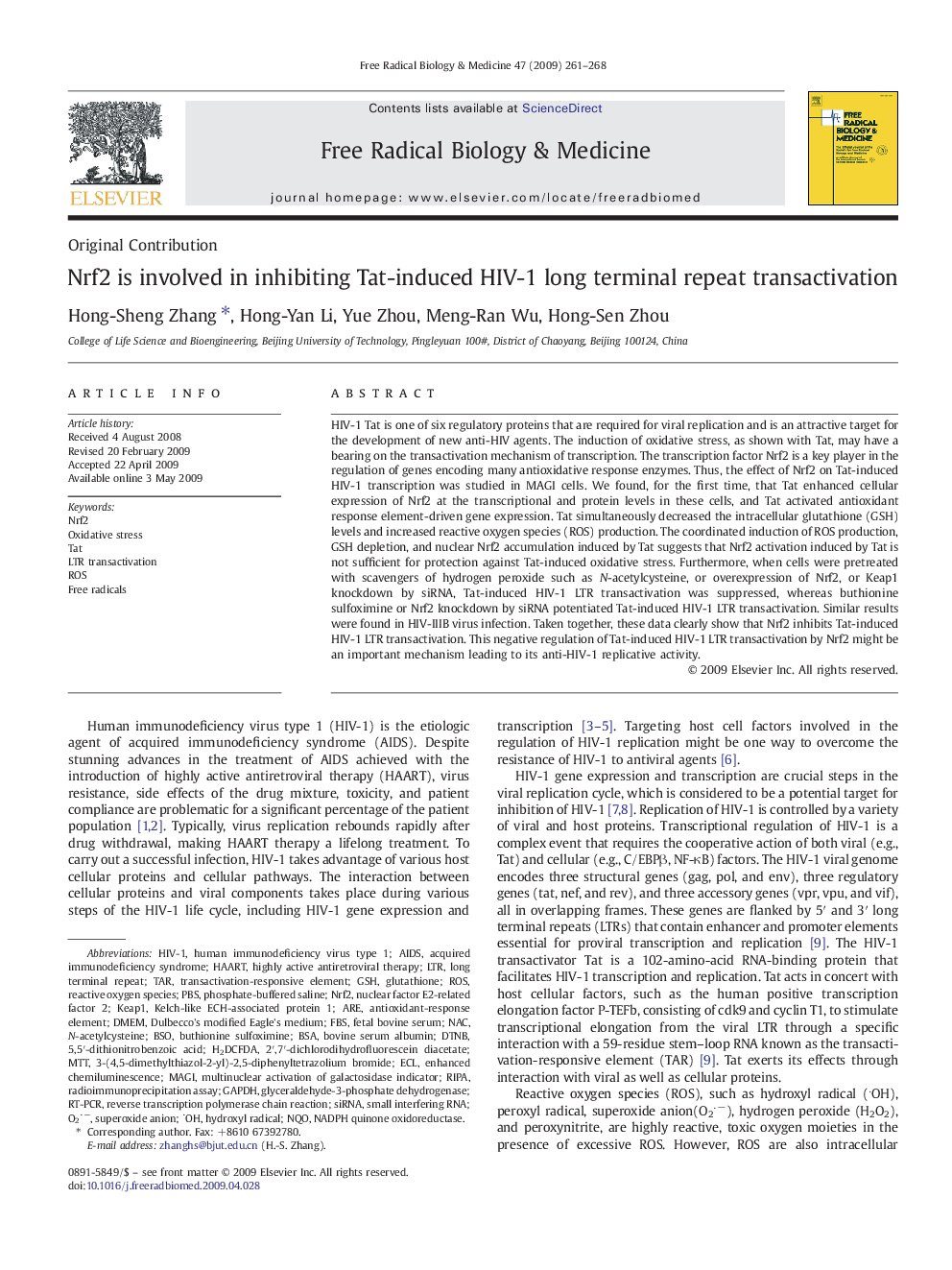| Article ID | Journal | Published Year | Pages | File Type |
|---|---|---|---|---|
| 1910064 | Free Radical Biology and Medicine | 2009 | 8 Pages |
HIV-1 Tat is one of six regulatory proteins that are required for viral replication and is an attractive target for the development of new anti-HIV agents. The induction of oxidative stress, as shown with Tat, may have a bearing on the transactivation mechanism of transcription. The transcription factor Nrf2 is a key player in the regulation of genes encoding many antioxidative response enzymes. Thus, the effect of Nrf2 on Tat-induced HIV-1 transcription was studied in MAGI cells. We found, for the first time, that Tat enhanced cellular expression of Nrf2 at the transcriptional and protein levels in these cells, and Tat activated antioxidant response element-driven gene expression. Tat simultaneously decreased the intracellular glutathione (GSH) levels and increased reactive oxygen species (ROS) production. The coordinated induction of ROS production, GSH depletion, and nuclear Nrf2 accumulation induced by Tat suggests that Nrf2 activation induced by Tat is not sufficient for protection against Tat-induced oxidative stress. Furthermore, when cells were pretreated with scavengers of hydrogen peroxide such as N-acetylcysteine, or overexpression of Nrf2, or Keap1 knockdown by siRNA, Tat-induced HIV-1 LTR transactivation was suppressed, whereas buthionine sulfoximine or Nrf2 knockdown by siRNA potentiated Tat-induced HIV-1 LTR transactivation. Similar results were found in HIV-IIIB virus infection. Taken together, these data clearly show that Nrf2 inhibits Tat-induced HIV-1 LTR transactivation. This negative regulation of Tat-induced HIV-1 LTR transactivation by Nrf2 might be an important mechanism leading to its anti-HIV-1 replicative activity.
